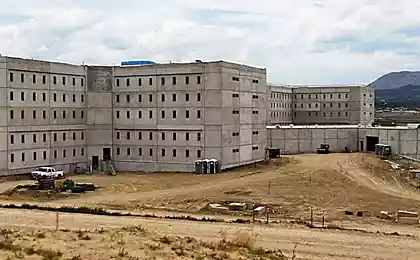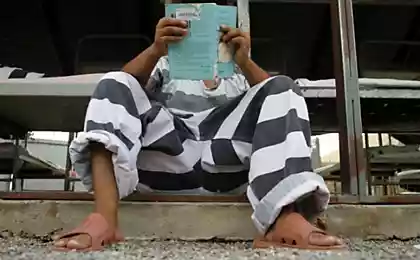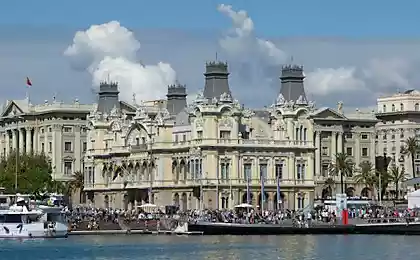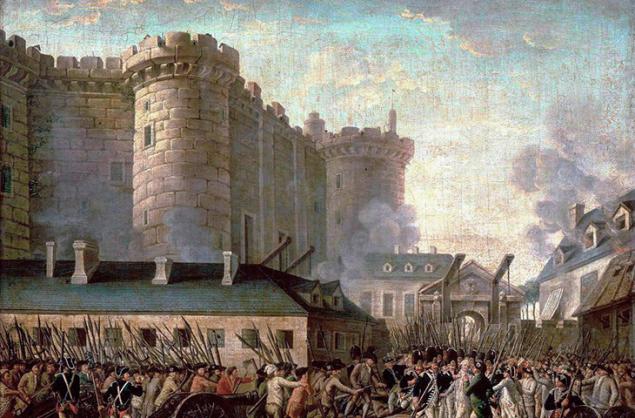
In 1789, the citizens of Paris and the rebel soldiers broke into the French Bastille, freeing prisoners and seizing ammunition depot. This event quickly became a symbol of the French Revolution, which led to the overthrow of the absolute monarchy. Until then, the Bastille had a terrible reputation. On the terrible conditions in which the prisoners were held, torture and killings in the fortress-prison went real legend.
Website is divided into a selection of interesting facts about the Bastille and its famous prisoners.
1. The French do not call their national holiday "Bastille Day» h3> 
Bastille Day is a national holiday of France, which is also noted in the French-speaking countries around the world. But the French themselves called that day simply and simply - "National Holiday" or "July 14».
2. Bastille was originally a castle gate h3> 
The Bastille was built as a fortress, the gates to protect the eastern side of Paris from the English and Burgundian troops during the Hundred Years War. The first stone was laid in 1370, and were completed to strengthen over the years. During the reign of Henry IV (1589 - 1610) was kept in the Bastille royal treasury.
3. The British took the Bastille h3> After winning the British, led by Henry V in. Battle of Agincourt during the Hundred Years War, the British occupied Paris. The French capital has been under occupation for 15 years, since 1420. British troops were quartered in the Bastille, the Louvre and the Chateau de Vincennes.
4. The Bastille was not always a prison h3> Bastille began to be used as a fortress-prison only after the Hundred Years War. Before that, the French monarchs took it dignitaries.
5. Cardinal de Richelieu was the first to use the Bastille as a state prison h3> 
Cardinal Richelieu (which recalls in his novel "The Three Musketeers" by Alexandre Dumas) after coming to power of Louis XIII proposed to use the Bastille as a state prison for senior guests. Many of them were imprisoned for political or religious reasons. Sun King Louis XIV and constantly throwing their enemies in jail or objectionable.
6. Voltaire was sitting in the Bastille h3> Francois-Marie Arouet, better known today as a writer Voltaire was imprisoned in the Bastille for 11 months in 1717 for satirical poems against the regent and his daughter. In prison, he wrote his first play and took the pseudonym Voltaire.
7. In fact, Voltaire was imprisoned twice h3> Reputation Voltaire is not only affected by his imprisonment in the Bastille, but on the contrary - it brought him popularity in certain circles. At age 31, Voltaire was already rich and popular, but again fell to the Bastille in 1726. The reason was a quarrel and the duel with an aristocrat - the Chevalier de Rohan-Chabot. In order not to go to jail "pre-litigation", Voltaire chose to leave France for England.
8. Man in the Iron Mask was really prisoners in the Bastille h3> In 1998, Leonardo DiCaprio starred in the movie "The Man in the Iron Mask," a film based on the novel by Alexandre Dumas. The film was very popular, but few people know that the movie hero was real prototype - Eustache Dauger. However, the mask on his face, which he wore during the 34-year sentence, was not iron, and black velvet.
9. Aristocrats unwanted relatives sent to the Bastille h3> 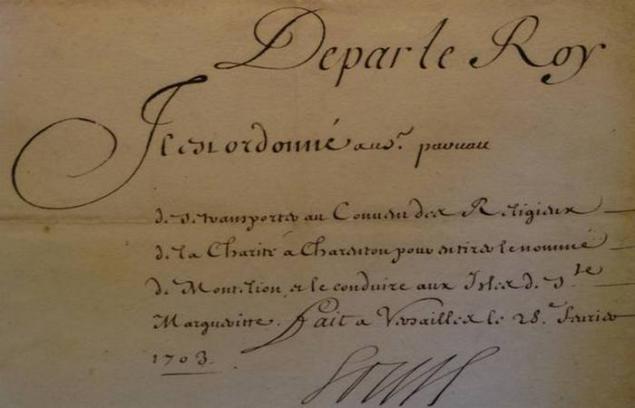
People can send in the Bastille only on the basis of Lettre de cachet (of the order of the court the arrest of a person in the form of a letter with the royal seal), and served as a prison for the "maintenance of public discipline." Often there were cases when the father could send his disobedient son in prison, his wife could punish her husband, who had raised her hand and adult daughter could pass his "distraught mother" of the royal guard.
10. Marquis de Sade wrote "120 Days of Sodom" in Bastia h3> Marquis de Sade was imprisoned for many years. For ten years he was in the Bastille, written at this time, "Justine" (his first published book) and "120 Days of Sodom." The manuscript is the last book was written in tiny letters on pieces of paper that smuggled sneaking in the Bastille.
11. Before the revolution of prisoners in the Bastille treated well h3> About Torture in the Bastille, its dungeons and infernal machines, which dismembered people was legendary. But it is known that before the revolution, some prisoners enjoyed special privileges. King agreed to pay inmates at ten livres per diem. It was enough to secure them a decent diet and living conditions.
Prisoners often asked to be fed at 5 livres, and the second half of the amount handed out after serving prison. For example, to Voltaire during his second imprisonment in the Bastille came five - six visitors a day. Moreover, he even spent a day a great position to settle some personal affairs.
12. The government intended the destruction of the Bastille, long before 1789 h3> 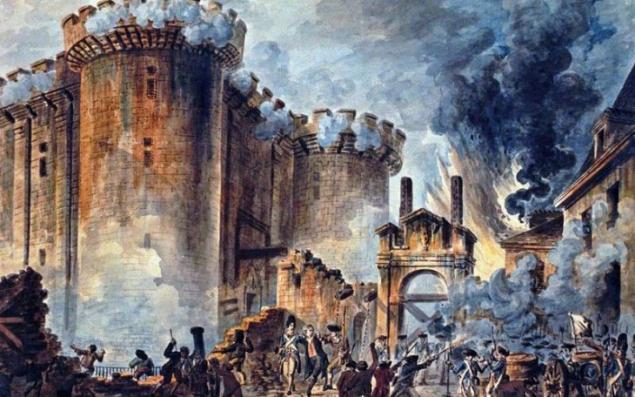
The Government could not fail to draw attention to the growing unpopularity of the Bastille, so the closure of the prison was said before 1789, while Louis XVI was against. City architect Korba in 1784 proposed a plan for the demolition of the 400-year old fortress and a complete restructuring of the quarter.
13. At the site of the Bastille was destroyed guillotine h3> 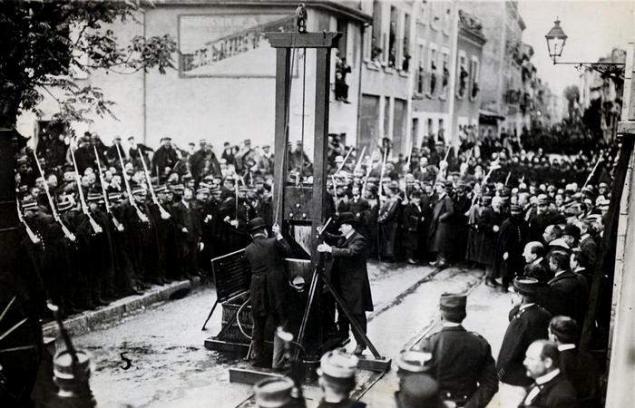
In June 1794 the revolutionaries put on the Place de la Bastille guillotine. While in Paris raging terror, and Maximilien Robespierre sought to introduce into society a non-Catholic religion, which, however, unlike the controversial cult of Reason Revolution is expected to maintain the concept of a deity. On that same guillotine Robespierre and executed in July 1794. However, by the time the guillotine was moved to the Revolution Square.
14. George Washington gave the key to the Bastille h3> The Marquis de Lafayette, who was a friend of George Washington during the American Revolution sent him one of the keys to the Bastille. Today, this key can be seen in the museum, the residence of the president of Mount Vernon.
15. In its place a monument elephant h3> After the destruction of the Bastille, Napoleon decided to install a monument in this place and announced a competition. Of all the projects he chose the unusual variant - a monument-fountain in the form of an elephant. Height bronze elephant was to be 24 meters, and it was going to be cast from guns captured by the Spaniards. It was built only a model of the tree that stood in Paris from 1813 to 1846.
via www.kulturologia.ru/blogs/220116/28138/


















